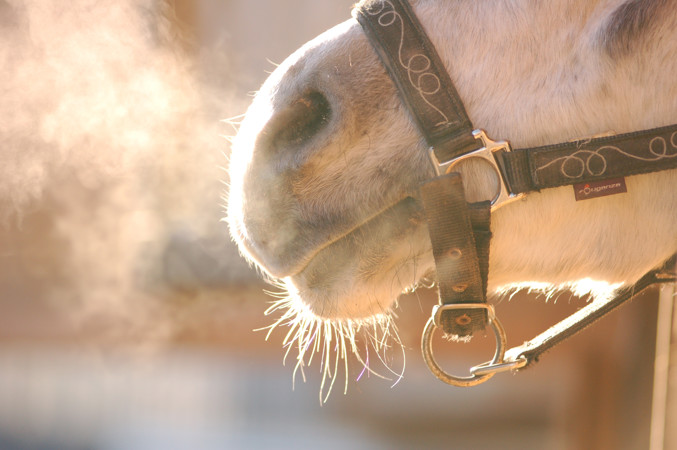LATEST NEWS
Snow & Ice
08 Jan 2025
Across our area, many of us are affected by snow and ice at the moment. Managing horses in these conditions is not easy and a balanced approach is needed.
- Frozen land
- Frozen schools
- Slippery yards
- Difficult to get vehicles to yards
- Horses becoming bored and agitated
Here are some things to consider and look out for with our equine friends:
COLIC
- Horses can drink less than normal when the temperatures plummet. If water troughs are frozen you must find a way of getting water to them, maybe also tempt them to drink more with a very sloppy mash.
- Ensure plenty of hay / roughage is available for your horse to eat.
WINTER LAMINITIS
- Low temperatures cause sugar levels to increase in the grass. Sunny winter’s days can be dangerous to those prone to laminitis. The bright blue skies with plenty of sunshine allow the plants to photosynthesise during the day, the following cold nights then lead to storage of the sugars that have been produced during the day. When horses eat the sugary grass, the amount of glucose in their bloodstream increases, this causes a rise in insulin which has been shown to cause laminitis. It is therefor important to keep horses at risk of laminitis off the grass in these conditions.
SOLID, RUTTED PASTURE / FROZEN SCHOOLS AND YARDS
- If turning horses out be mindful of the very hard ground and the injury this could cause. Horse’s prone to galloping, bucking, and playing in the sunshine and snow are at risk of leg injuries and lameness, worst case scenario, there is an increased chance of broken limbs.
- Maybe place piles of hay / haylage out for them to eat to try to keep them quiet. The piles must be well spaced out to avoid any bickering between field companions.
HORSES STOOD IN FOR EXTENDED PERIODS OF TIME
- This brings its own risks as inactivity is far from ideal. Boredom and poor behaviour could set in.
- If this is your preferred choice, maybe try vigorous grooming to keep the blood flowing and the muscles loose.
- Stable toys to occupy the days
- Other horses, neighbours around for company.
- Risk of impaction colic, ensure good access to water and monitor faecal output.
RUGGING AND KEEPING YOUR HORSE WARM
- Remember, horses have a much lower thermoneutral zone (the temperature range where they do not have to expend energy to keep warm) than humans. Horses 5 - 25 degrees. Humans 20 - 35 degrees. This means that if you are cold your horse may not be cold
- Horses have a caecum which acts as a giant internal combustion engine producing heat - the human equivalent is the appendix which produces no heat
- Remember every horse is different, be sure to check your horses ears, not just his body to see if you think he is cold.
DIFFICULTY GETTING TO THE YARD
- Maybe you can buddy up with others and share the work load if someone is struggling. Maybe some have a more suitable 4x4 vehicle.
There are no ideal solutions in these conditions. All yards are set up differently and all horses cope differently. We can all only do our best and keep our eyes peeled for any potential problems arising.
Do not hesitate to give us a call if you have any concerns about your horse or pony. 0808 168 5580 or 01254 888 600.
